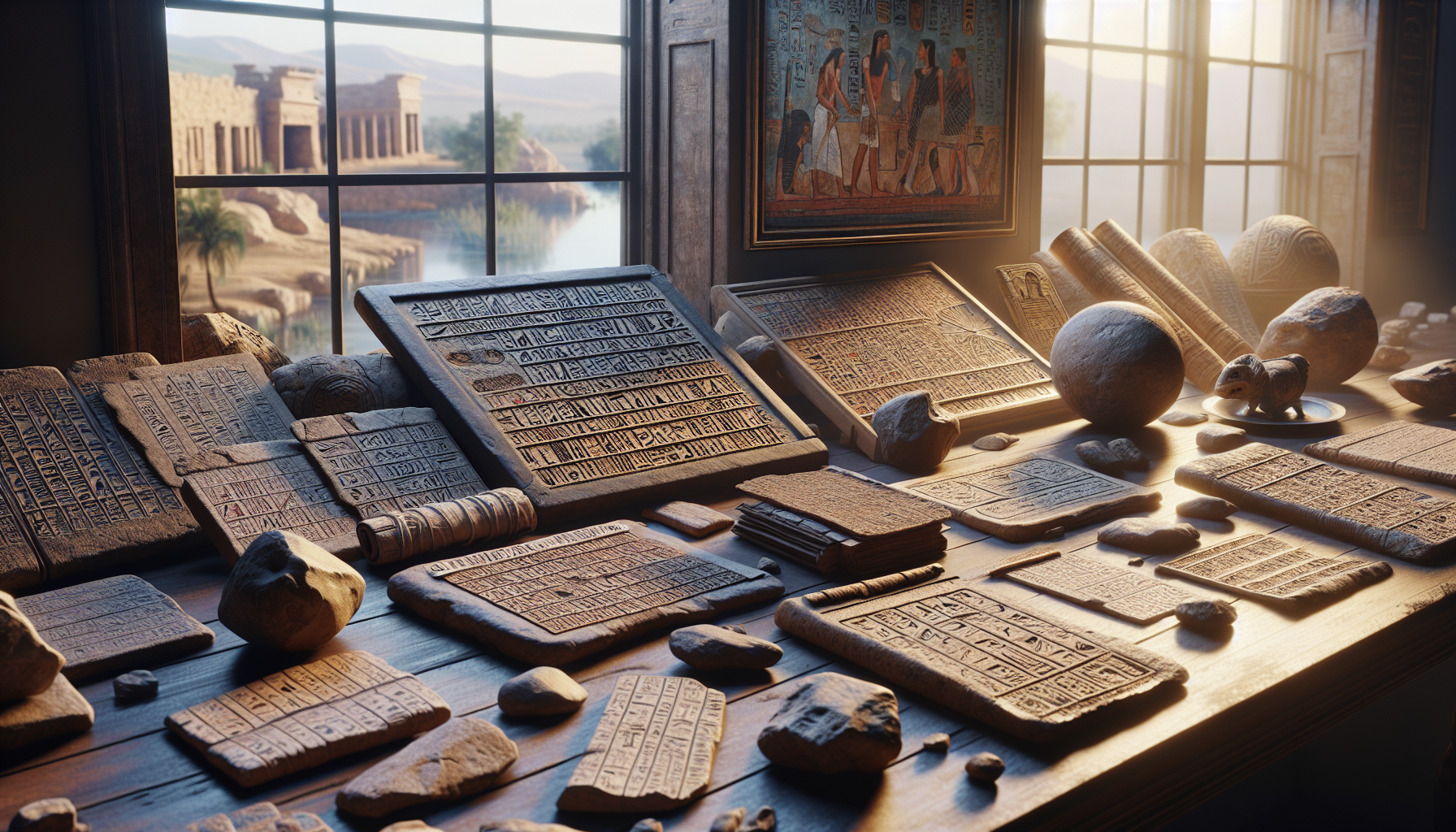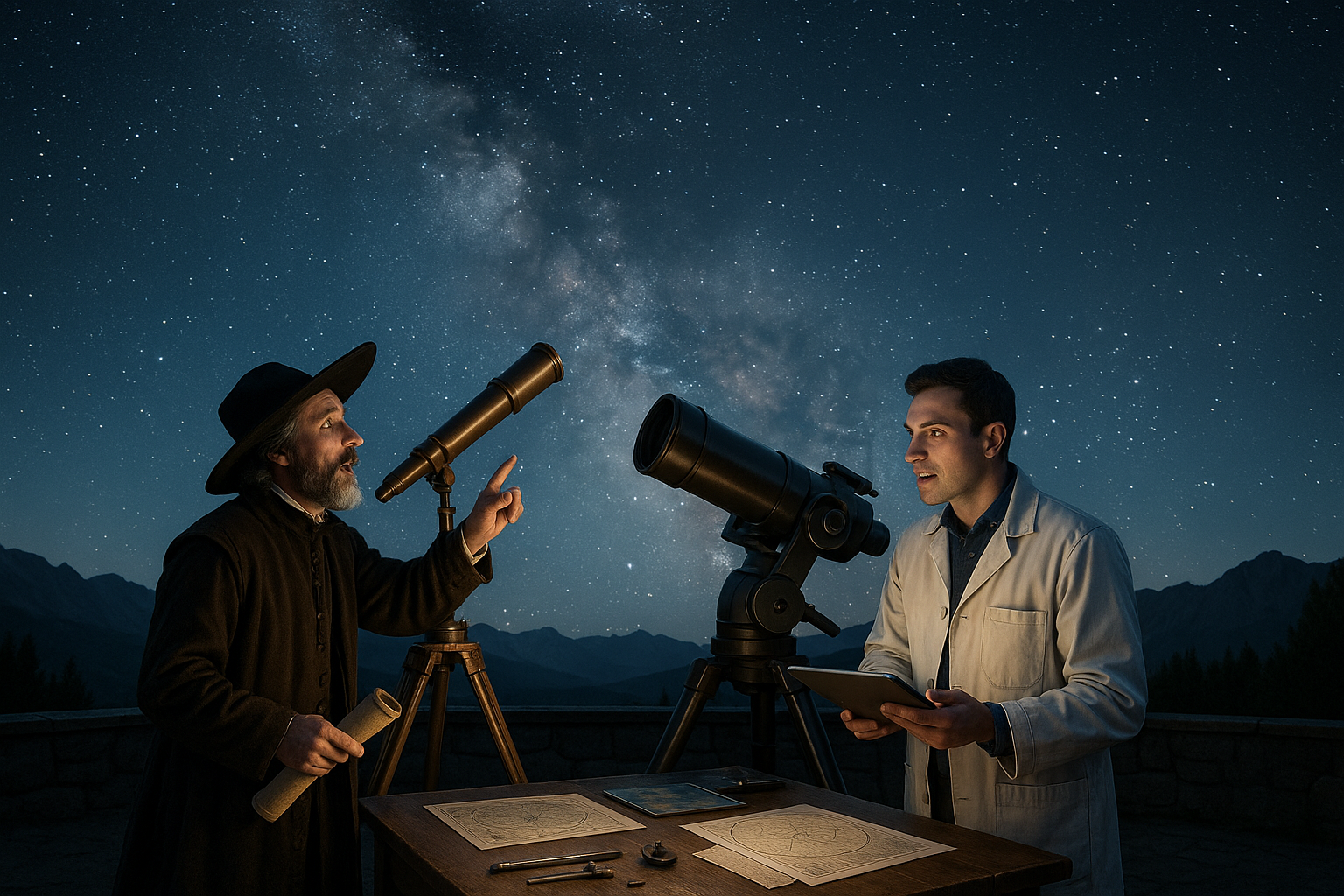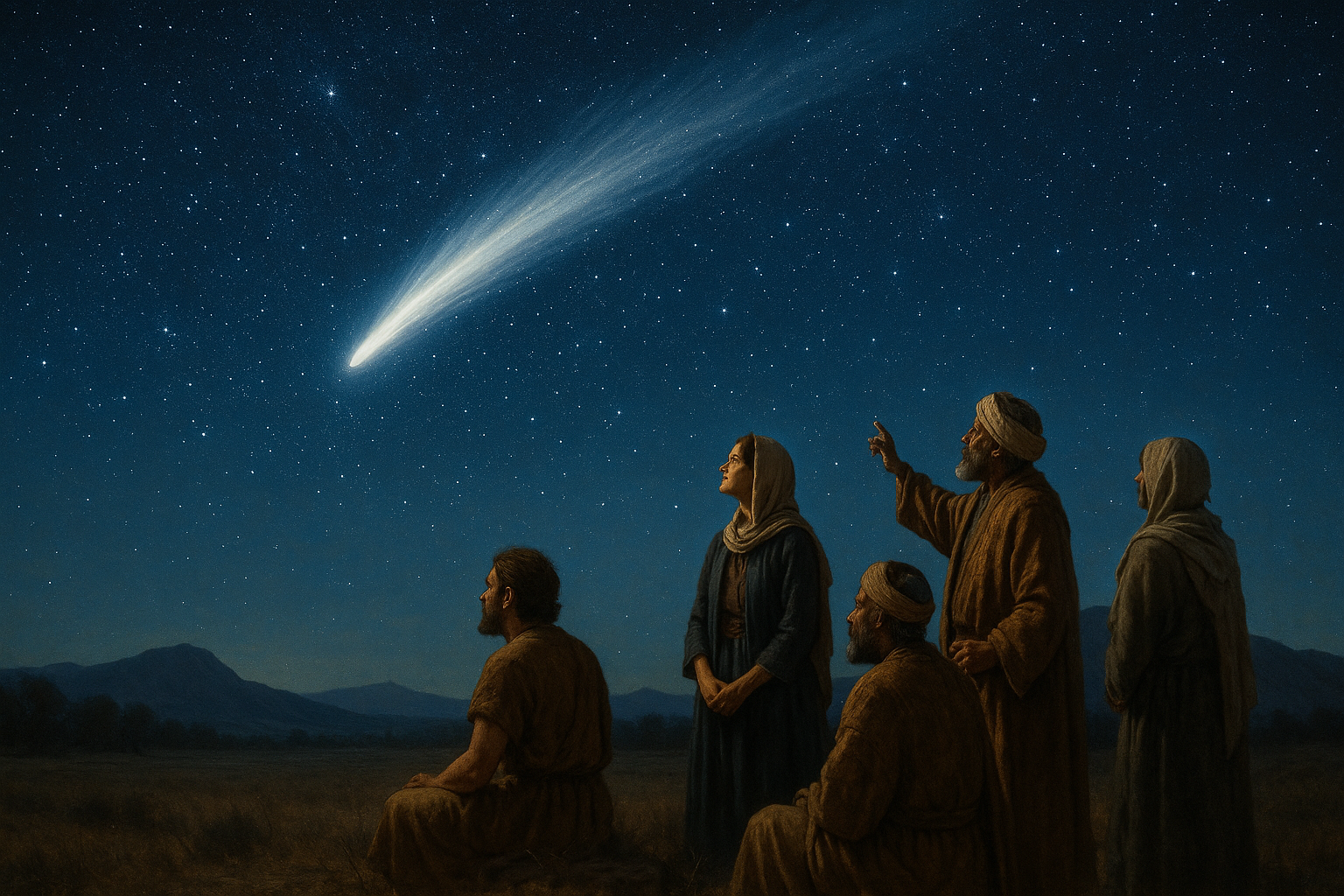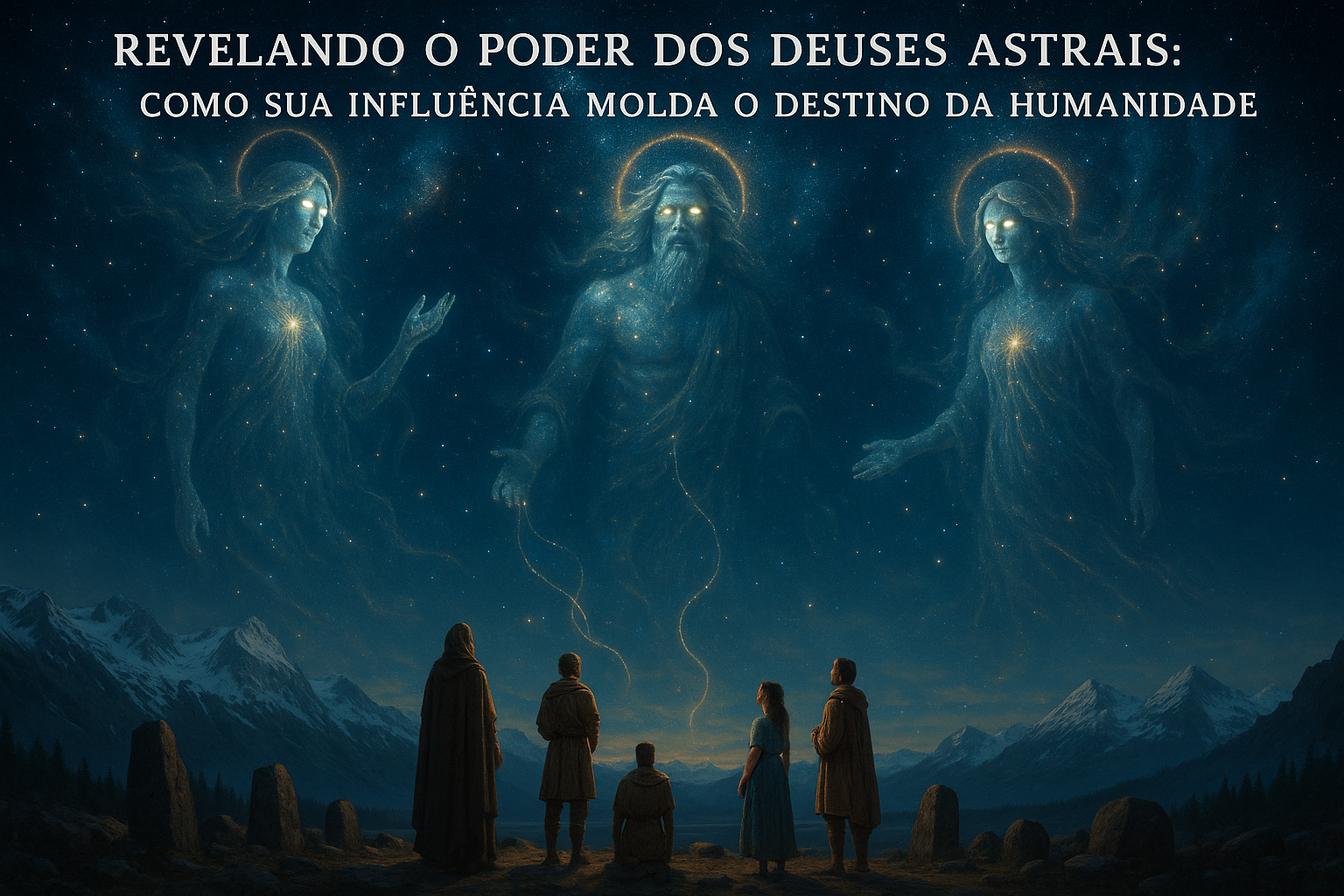In a world where our lives are meticulously orchestrated by the ticking hands of clocks and the relentless turning of calendar pages, it’s easy to forget that the very concept of tracking time is a human invention, crafted out of necessity and refined over millennia. 📅 The journey of early calendars is a fascinating tale of ingenuity, cultural evolution, and profound impact on societies around the globe. From ancient civilizations gazing at the stars to contemporary digital planners, calendars have not only helped us measure the passage of time but have also shaped our social structures, religious practices, and even agricultural cycles. This exploration into the evolution of early calendars unravels how they have served as more than mere tools of timekeeping; they have been pivotal in the development of human civilization itself.
As we embark on this journey through the annals of time, we will delve into the origins of early calendars, examining the ingenious methods our ancestors employed to bring order to the chaos of days and seasons. We’ll trace the footsteps of the Sumerians and Egyptians, who looked to the heavens and crafted some of the first known calendars, and explore how the Mayans and Chinese made their unique contributions to the art of timekeeping. 📜 This article will also consider the religious and cultural implications these calendars carried, from dictating the timing of festivals and rituals to influencing social hierarchies and power structures. Understanding these ancient systems not only offers us a glimpse into the minds of early civilizations but also highlights the universal human quest to comprehend and control the passage of time.
Finally, we will address the enduring impact of these early calendars on modern society. How did these ancient systems evolve into the Gregorian calendar that governs our current year? What remnants of these early practices can still be found in the way we celebrate holidays or organize our daily lives? 🌍 By unlocking the past and understanding the evolution of calendars, we gain insights not only into historical societies but also into our own, revealing how deeply interconnected we are with the rhythm of time. So, as we turn back the pages of history, prepare to discover the remarkable story of how humanity has endeavored to capture the essence of time and what that means for us today.
The Dawn of Timekeeping: Ancient Calendars
The concept of measuring time has been an integral part of human civilization for millennia. Early calendars are fascinating for their role in organizing societies, facilitating agricultural activities, and even influencing cultural and religious practices. The genesis of these calendars can be traced back to ancient civilizations that sought to understand and order the natural world around them. These early systems were not only tools of timekeeping but were also reflective of the societies that created them.
One of the earliest known calendars is the Egyptian calendar, which was primarily based on the lunar cycle. The ancient Egyptians were meticulous in their observations of the heavens, and they recognized the significance of the heliacal rising of the star Sirius, which heralded the annual flooding of the Nile River. This event was crucial for agriculture, as it enriched the soil and determined the planting seasons. The Egyptian calendar initially consisted of 12 months of 30 days each, followed by an intercalary month to complete the solar year.
Meanwhile, the Mayan civilization developed one of the most sophisticated calendar systems of the ancient world. The Mayan calendar was a complex interplay of several cycles, including the Tzolk’in, a 260-day ritual calendar, and the Haab’, a 365-day solar calendar. The synchronization of these cycles created a 52-year period known as the Calendar Round, which was integral to Mayan timekeeping and mythology. Their Long Count calendar, which spanned approximately 5,125 years, provided a framework for recording historical events, as well as predicting future astronomical phenomena.
The Influence of Lunar and Solar Calendars
As societies evolved, so did their calendars. Lunar calendars were among the earliest timekeeping systems, with the moon’s phases offering a natural and observable cycle. However, lunar calendars often fell out of sync with the solar year, necessitating periodic adjustments. The Islamic calendar, for example, is a purely lunar system that results in the Islamic year being shorter than the solar year by about 11 days. This causes Islamic months to shift through the seasons over time.
In contrast, solar calendars are based on the Earth’s orbit around the sun, aligning more closely with the seasons. The Gregorian calendar, which is widely used today, is a solar calendar that was introduced by Pope Gregory XIII in 1582. It corrected the inaccuracies of the Julian calendar by adjusting the leap year rule, ensuring that the calendar year remained in sync with the solar year. The Gregorian calendar’s adoption was gradual, with some countries taking centuries to switch from their traditional systems.
The interplay between lunar and solar calendars is exemplified by the Jewish calendar, which is lunisolar. It combines lunar months with solar years, requiring the addition of an extra month every few years to maintain alignment with the agricultural seasons. This adjustment ensures that Jewish festivals, which have agricultural significance, occur in their appropriate seasons.
The Social and Cultural Impact of Early Calendars
Early calendars were not just tools for timekeeping; they were vital to the social and cultural fabric of ancient societies. By structuring time, these calendars provided a framework for agricultural activities, religious festivals, and community events. In agrarian societies, calendars dictated the timing of planting and harvesting, directly impacting food supply and survival. The coordination of these activities was essential for the prosperity and stability of the community.
Culturally, calendars played a pivotal role in the synchronization of societal rhythms. They dictated the timing of religious ceremonies, festivals, and public gatherings, fostering a sense of unity and shared identity. The ancient Roman calendar, for instance, was deeply intertwined with religious observances, with months named after deities and significant events. The Roman festival of Saturnalia, which celebrated the god Saturn, was a time of feasting, gift-giving, and social upheaval, with roles temporarily reversed between masters and slaves.
Moreover, calendars had an astronomical significance that extended beyond timekeeping. They were a testament to the advanced astronomical knowledge of ancient civilizations. The alignment of structures like Stonehenge with celestial events demonstrates the importance of astronomy in early calendar systems. These alignments were not merely coincidental; they were intentional, reflecting a deep understanding of the cosmos and its cycles.
Religious and Mythological Connections
Religious and mythological narratives were often interwoven with early calendar systems. The Hindu calendar, for example, is rich with mythological associations. It follows a lunisolar system, with months corresponding to lunar cycles and festivals tied to both solar and lunar events. These festivals, such as Diwali and Holi, are celebrated with fervor across the Indian subcontinent, marking the changing seasons and significant mythological events.
The Chinese calendar, another lunisolar system, is renowned for its zodiac cycle, which assigns an animal sign to each year in a 12-year cycle. This calendar is integral to traditional Chinese festivities like the Lunar New Year, which is celebrated with rituals and customs steeped in cultural heritage. The zodiac signs are believed to influence personality traits and destinies, adding a layer of mysticism to this timekeeping system.
In the ancient world, calendars were more than just practical tools; they were imbued with spiritual and mystical significance. The Mayan calendar, with its intricate cycles and predictions, was central to Mayan cosmology and eschatology. It was believed to influence the fate of individuals and the world itself, underscoring the profound connection between timekeeping and belief systems.
Technological Advances and the Evolution of Calendars
The evolution of calendars has been closely linked to technological advancements and scientific discoveries. As societies progressed, so did their ability to measure and understand time. The development of astronomy and mathematics played a crucial role in refining calendar systems, making them more accurate and reliable.
The invention of the astrolabe and other astronomical instruments allowed for precise observations of celestial bodies, which in turn led to improvements in calendar accuracy. The Islamic Golden Age saw significant advancements in astronomy, with scholars like Al-Biruni and Al-Khwarizmi making significant contributions to the development of more precise calendars. Their work laid the foundation for future innovations and the eventual transition to more accurate solar-based systems.
In the modern era, technological advances have revolutionized timekeeping. The advent of atomic clocks has enabled unprecedented precision, with time measured in fractions of a second. This precision has applications in various fields, including navigation, telecommunications, and scientific research. The leap second, occasionally added to Coordinated Universal Time (UTC), is a testament to our ongoing efforts to maintain calendar accuracy in the face of Earth’s changing rotational dynamics.
The Global Adoption of the Gregorian Calendar
The widespread adoption of the Gregorian calendar is a testament to its effectiveness and adaptability. Initially introduced in 1582, it was gradually adopted by countries worldwide, replacing a myriad of traditional and regional calendars. The calendar’s leap year system, which adds an extra day every four years, ensures that it remains aligned with the Earth’s orbit around the sun, maintaining seasonal consistency.
The transition to the Gregorian calendar was not without challenges. Cultural and religious resistance delayed its adoption in some regions, with countries like Greece and Russia only switching in the early 20th century. However, the calendar’s practical advantages eventually led to its global acceptance, facilitating international communication, trade, and travel.
The Gregorian calendar’s impact on society cannot be overstated. It has standardized timekeeping across the globe, enabling coordinated activities on an international scale. The calendar’s influence extends to cultural and religious practices, with holidays and observances often aligning with its framework. Its adoption has fostered a sense of global unity, allowing diverse cultures to synchronize their activities and events.
Legacy and Future of Calendar Systems
The legacy of early calendars is evident in our modern timekeeping systems, which continue to draw inspiration from ancient methods. Despite the advances in technology, the basic principles of calendar systems remain rooted in the natural cycles of the sun and moon. This enduring connection to nature reflects humanity’s ongoing quest to understand and order the world around us.
Looking to the future, the evolution of calendar systems may be influenced by new scientific discoveries and technological innovations. As our understanding of time and space deepens, so too will our ability to measure and manage it. The potential for new calendar systems, possibly incorporating interplanetary timekeeping, is a tantalizing prospect as humanity explores the cosmos and expands its presence beyond Earth.
The future of calendars may also see the integration of digital and virtual technologies, enabling personalized and adaptive timekeeping systems. These innovations could revolutionize the way we perceive and interact with time, providing new opportunities for cultural exchange and global collaboration. As we continue to innovate, the lessons of the past will guide us, ensuring that our timekeeping systems remain relevant and meaningful in an ever-changing world.
The Impact on Cultural Identity
Calendars have always been a reflection of cultural identity, encapsulating the values, beliefs, and priorities of the societies that create them. The preservation of traditional calendar systems alongside the global use of the Gregorian calendar highlights the importance of cultural diversity in timekeeping. Indigenous calendars, such as those used by Native American tribes, offer insights into ecological knowledge and cultural heritage, emphasizing the interconnectedness of human and natural systems.
The coexistence of multiple calendar systems is a testament to the resilience of cultural traditions in the face of globalization. As societies strive to maintain their unique identities, the integration of traditional and modern timekeeping methods offers a rich tapestry of cultural expression. This diversity enriches our understanding of time, providing a multifaceted perspective that celebrates the complexity of human experience.
As we move forward, the challenge will be to balance the benefits of global standardization with the preservation of cultural heritage. The ongoing dialogue between tradition and innovation will shape the future of calendars, ensuring that they continue to serve as both practical tools and symbols of cultural identity.
| Calendar System | Type | Notable Features |
|---|---|---|
| Egyptian Calendar | Lunar | Based on lunar cycles; heliacal rising of Sirius; intercalary month. |
| Mayan Calendar | Lunisolar | Tzolk’in and Haab’ cycles; Calendar Round; Long Count for historical events. |
| Islamic Calendar | Lunar | Purely lunar system; shifts through seasons; significant for Islamic rituals. |
| Gregorian Calendar | Solar | Leap year system; global adoption; aligns with Earth’s orbit. |
For a deeper dive into how calendars have shaped civilizations, watch this informative video on The Ancient Calendars of Mankind from the History Time channel. 📺
- Discover the role of calendars in agriculture and survival.
- Explore the cultural significance of ancient timekeeping.
- Learn about technological advancements in calendar accuracy.
- Understand the global impact of the Gregorian calendar.
- Consider the future of calendar systems in a digital world.

Conclusion
In conclusion, exploring the fascinating journey of early calendars reveals much about the evolution of human societies and their relationship with time. From the primitive markings on bones to sophisticated astronomical observations, the development of calendars has been a testament to human ingenuity and a vital tool for societal organization. These ancient systems were not just about keeping track of days; they were deeply intertwined with agricultural practices, religious rituals, and cultural traditions, influencing various aspects of daily life and the evolution of civilizations.
Initially, early calendars emerged from the necessity to track celestial bodies and seasonal changes. Societies like the Egyptians and the Babylonians made significant advancements in astronomical observations, leading to more accurate and reliable timekeeping systems. The Egyptian solar calendar and the Babylonian lunar calendar are prime examples of how ancient cultures ingeniously adapted their calendrical systems to meet their societal needs, balancing between solar and lunar cycles to ensure agricultural success and religious harmony.
The Mayans and the Chinese further expanded the complexity of calendars by incorporating intricate systems that reflected their understanding of the universe and time. The Mayan calendar, with its Long Count system, not only showcased the sophistication of their astronomical knowledge but also illustrated their belief in cyclical time. Meanwhile, the Chinese lunisolar calendar highlighted the blend of lunar and solar observations, underpinning a calendar system that was essential for agriculture, festivals, and governmental functions.
One of the most significant impacts of early calendars on society was their role in unifying communities and fostering a shared cultural identity. Calendars dictated the timing of festivals, religious ceremonies, and agricultural practices, creating a rhythm to life that bound people together. They provided a common framework within which societies could organize themselves, making calendars fundamental to the development of structured, cohesive communities.
The evolution of calendars also underscores the human desire to understand and exert control over time. It reflects a broader philosophical and existential quest to find order in the universe. As societies developed, so too did their calendars, with the Gregorian calendar eventually emerging as a global standard. The Gregorian calendar’s widespread adoption is a testament to the power of timekeeping systems to transcend cultural boundaries and become a unifying force in an increasingly interconnected world.
Understanding the history and impact of early calendars offers invaluable insights into how our ancestors interacted with the natural world and organized their societies. It reminds us of the profound connection between celestial phenomena and human life, a relationship that continues to influence our modern perception of time. Moreover, this exploration encourages us to appreciate the ingenuity and adaptability of early societies, who laid the groundwork for the complex calendrical systems we rely on today.
As we reflect on the historical significance of these early timekeeping systems, it’s essential to recognize their lasting influence on contemporary society. Calendars remain central to our daily lives, guiding everything from international business operations to cultural celebrations. They are a testament to our shared human heritage and a reminder of the enduring quest to understand the passage of time.
For further reading and research, you may explore resources such as:
1. [NASA’s History of Calendars](https://www.nasa.gov) for insights into astronomical influences on calendrical systems.
2. [Encyclopaedia Britannica on the Mayan Calendar](https://www.britannica.com) for a deeper understanding of Mayan timekeeping.
These resources provide a wealth of information and can enhance your understanding of the complex and intriguing evolution of calendars throughout history. Thank you for joining us on this journey through time, and may the stories of our past continue to inspire and enlighten us.
Toni Santos is a visual storyteller and cosmic interpreter whose work illuminates the ancient skywatchers and their prehistoric astronomy—the profound ways early humans observed and revered the heavens before written history. Through a visionary lens, Toni explores how the stars, planets, and celestial cycles shaped myth, ritual, and survival in cultures lost to time.
Rooted in a fascination with archaic observatories, stone alignments, and celestial symbolism, Toni’s creative journey reveals the deep human impulse to understand and harmonize with the cosmos. From lunar phases guiding planting seasons to the sacred paths of the Milky Way, each of his works embodies the awe and knowledge encoded in the night sky.
Combining artistic craftsmanship with archaeological insight, Toni’s pieces evoke the mystery and precision of prehistoric astronomers. His work does more than depict—it channels the timeless dance between earth and sky, bridging ancient wisdom with contemporary wonder.
As the visionary behind Vizovex, Toni shares curated visuals, essays, and symbolic studies that invite others to reconnect with the cosmic heritage written in stone and starlight. His creations are a call to look upward, to listen to the silent stories told by the stars, and to honor the first astronomers who mapped the heavens with reverence and ingenuity.
His work is a tribute to:
The celestial wisdom of prehistoric peoples
The sacred geometry of ancient observatories
The enduring bond between human culture and the cosmos
Whether you’re a stargazer, a scholar of ancient mysteries, or someone captivated by the universe’s earliest storytellers, Toni welcomes you to journey through a space where the sky is both map and myth—one constellation, one ritual, one revelation at a time.




